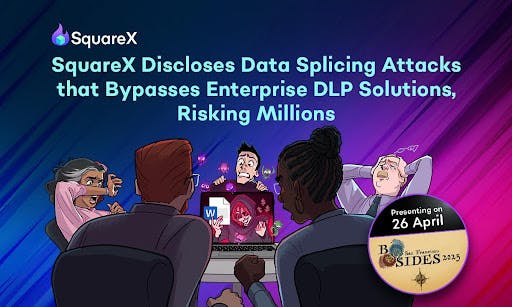Artificial intelligence is rapidly transforming the cloud computing battlefield, with AI infrastructure emerging as the decisive factor in shaping enterprise strategies and tech supremacy. As hyperscalers intensify their push toward full-stack AI solutions, they’re building expansive ecosystems and prioritizing developer-friendly tools to stay ahead.
On the latest theCUBE Podcast episode, John Furrier (pictured, right) and Dave Vellante (left), principal analysts at theCUBE Research, discuss how next-generation foundational models, evolving cybersecurity challenges, global supply chain shifts and bold infrastructure modernization are putting the market in flux. They also cover how AI continues to be the connective force propelling this seismic shift in cloud technology.
“It’s AI everywhere all at once,” Furrier said. “It’s happening now in the application layer.”
AI infrastructure defines competitive positioning
Enterprises are being pulled into the gravity of AI infrastructure, with hyperscalers such as Google Cloud making tangible gains in both innovation and market share. Google Cloud’s rapid growth trajectory has the platform becoming more profitable and deeply integrated into core business use cases.
This shift marks a pivotal moment for cloud computing, where the battle is no longer just about compute or storage, but about who can deliver full-stack AI the fastest. These investments are shaping not only product development but also strategic partnerships that fuel the broader ecosystem, according to Vellante.
“Google Cloud this year will be a $54 billion business,” he said. “Google Cloud Platform, the infrastructure-as-a-service and the platform-as-a-service piece will be more than half of that, almost 30 billion of that.”
The AI-first approach is also changing how cloud platforms structure their services — from optimized silicon to tighter software integration. Hyperscalers are looking beyond just cloud compute power; they are focusing on enabling real-world applications that harness AI’s full potential.
Companies such as Palo Alto Networks Inc. are scaling AI services on Google Cloud’s marketplace, reinforcing the urgency for tight alignment between performance, security and developer engagement. This shift underscores how essential it is for cloud providers to not only build powerful infrastructure but also cultivate an accessible ecosystem for enterprises to innovate, Vellante explained.
“Palo Alto, which obviously is very aggressive, they’re a product-driven company, they do a lot of M&A, but they’re very engineering-oriented,” he added. “They built their data platform, their stack on top of Google.”
Beyond infrastructure, developer experience has become a critical focus area. Even the most advanced AI stack will falter if developers don’t embrace the tools provided, Furrier and Vellante emphasized. Google’s emphasis on Kubernetes and Vertex AI, brought to the forefront in keynote discussions, illustrates their intent to make development experiences as seamless as possible. This attention to tooling and ecosystem maturity is what could ultimately distinguish cloud leaders from laggards in the AI era.
Market volatility and evolving security posture
Outside the realm of infrastructure and growth, they explored external challenges weighing heavily on the market. Geopolitical tensions, particularly the escalation of Trump-era tariffs now totaling 145% on Chinese imports, are reshaping tech manufacturing strategies and triggering market volatility. This policy uncertainty has created an environment of fear and hesitation, with ripple effects felt across supply chains and major tech players such as Apple Inc., Nvidia Corp. and Amazon Web Services Inc.
“The White House now says Trump’s tariffs on China total 145%,” Furrier said. “This is a major cat-and-mouse game with the government of the United States absolutely screwing the market sideways and forwards … and backwards.”
During theCUBE Pod segment, they replayed the keynote analysis from Google Cloud Next, which included theCUBE analysts Paul Nashawaty and Savanah Peterson, in addition to Furrier and Vellante. They talked about how, despite these headwinds, cloud providers are pushing forward with aggressive expansion plans. However, one notable gap in the conversation was security — a topic that received surprisingly little focus at Google Cloud Next.
The analysts speculated that Google may have intentionally downplayed security narratives, perhaps due to active partnerships with companies such as Palo Alto Networks and the sensitive nature of recent acquisitions, such as Wiz Inc. Still, the growing capabilities of adversaries powered by generative AI mean that the security conversation is far from dormant.
“Nir Zuk [founder and CTO of Palo Alto Networks] told me … that everything we know about security has changed because of AI,” Vellante said. “He said, ‘We used to be able to stop 99% of the attacks, and that 1%, humans could deal with, but because of generative AI, it’s impossible.’ The adversaries can scale their phishing attacks so much, that 1% overwhelms the human. The only way to defend it is with AI. Everything has to be rethought.”
As the industry advances, the intersection of AI-powered innovation and stronger security strategies becomes increasingly important. Hyperscalers that manage to balance aggressive growth with resilient, trusted security frameworks will likely define the future of enterprise cloud services. And while AI infrastructure and ecosystem depth are key drivers of today’s cloud evolution, trust and security will be essential pillars for long-term leadership, according to the analysts.
In this pivotal moment for cloud computing, success is being redefined not by scale alone, but by the ability to deliver trusted AI infrastructure that empowers developers, strengthens ecosystems and navigates geopolitical uncertainty with agility.
Watch the full podcast below to find out why these industry pros were mentioned:
Brian J. Baumann, founder of NYSE Wired and director of capital markets, technology at NYSE
Savannah Peterson, founder & chief unicorn at Savvy Millennial and principal analyst at theCUBE Research
Paul Nashawaty, principal analyst at theCUBE Research
Rob Hof, editor-in-chief at News Media
Frank Fay, business development and customer success at News Media
Don Klein, GM for strategic partnerships and channel sales at News
Rob Strechay, managing director and principal analyst at theCUBE Research
Mark Zuckerberg, CEO at Meta Platforms
Nirav Mehta, product management leadership for Google Cloud Compute at Google
Kara Swisher, journalist and podcast host
Donald Trump, 45th and 47th president of the United States of America
Ray Dalio, chief investment officer of Bridgewater Associates
Andy Jassy, president and CEO at Amazon
Here’s the full theCUBE Pod episode:
Don’t miss out on the latest episodes of “theCUBE Pod.” Join us by subscribing to our RSS feed. You can also listen to us on Apple Podcasts or on Spotify. And for those who prefer to watch, check out our YouTube playlist. Tune in now, and be part of the ongoing conversation.
Photo: News
Your vote of support is important to us and it helps us keep the content FREE.
One click below supports our mission to provide free, deep, and relevant content.
Join our community on YouTube
Join the community that includes more than 15,000 #CubeAlumni experts, including Amazon.com CEO Andy Jassy, Dell Technologies founder and CEO Michael Dell, Intel CEO Pat Gelsinger, and many more luminaries and experts.
THANK YOU









